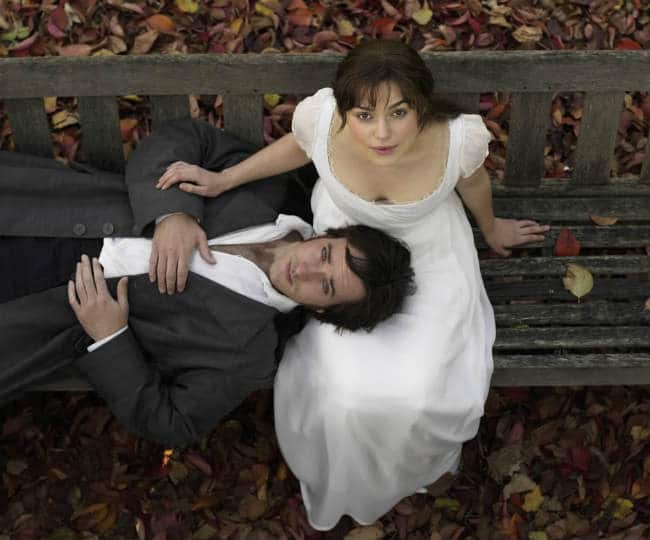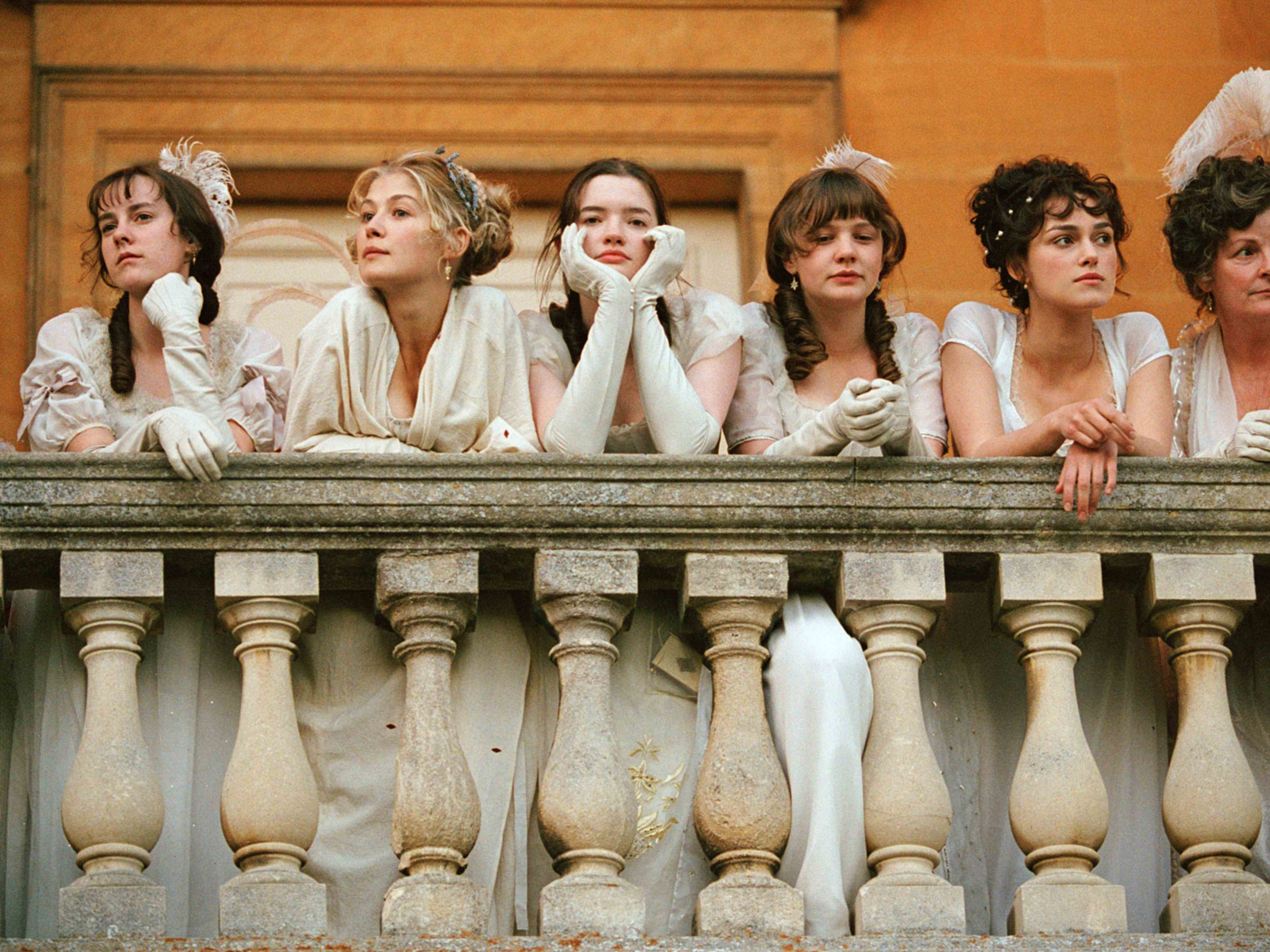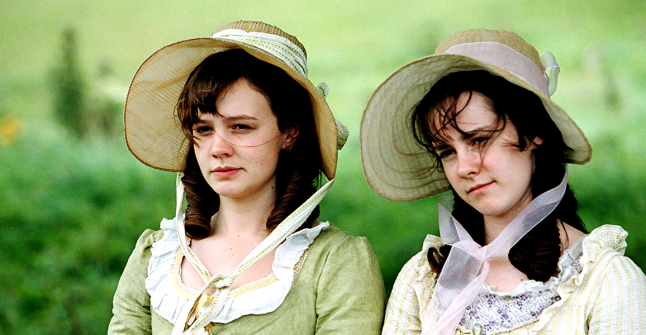Pride & Prejudice (2005)
- nguyentruong
- November 7, 2024

Pride & Prejudice (2005), directed by Joe Wright, is a fresh adaptation of Jane Austen’s beloved 1813 novel. Set in the English countryside of the early 19th century, the film tells the story of Elizabeth Bennet, an independent-minded young woman from a modest family, and Mr. Darcy, a wealthy and seemingly aloof gentleman. The film beautifully explores themes of love, class, family, and individual integrity, balancing romance and social critique while immersing viewers in Austen’s world through its breathtaking cinematography, period costumes, and stellar performances.
Keira Knightley stars as Elizabeth Bennet, bringing a modern, spirited edge to her portrayal of the iconic heroine. Elizabeth is the second eldest of five Bennet sisters, each of whom represents different aspects of societal expectations for women of the time. Elizabeth is witty, sharp, and independent, standing in contrast to her more traditional mother, Mrs. Bennet, who is preoccupied with finding suitable husbands for her daughters. As her family’s financial situation is uncertain, Elizabeth faces societal pressure to marry for security rather than for love. However, her intelligence and strong moral compass drive her to seek a marriage based on genuine respect and affection.
Matthew Macfadyen plays Mr. Fitzwilliam Darcy, whose initial interactions with Elizabeth are marred by his reserved, even disdainful demeanor. Darcy, a man of great wealth and social standing, is initially perceived as arrogant and prideful, making him an unlikely romantic interest for Elizabeth. However, as the story unfolds, it becomes clear that Darcy’s reserve masks a deep sensitivity and sense of responsibility. Macfadyen’s portrayal adds layers to Darcy, making his inner turmoil and eventual transformation genuinely affecting.
The film opens with a sequence capturing the peaceful, pastoral beauty of the Bennet family’s estate, Longbourn. The Bennets’ modest country home is a charming yet humble setting, underscoring the contrast with Darcy’s grand estate, Pemberley. This visual juxtaposition highlights the class divide between Elizabeth and Darcy, one of the central conflicts of the story. When Mr. Bingley, a wealthy and kind-hearted bachelor, rents a nearby estate, he soon becomes enamored with Jane Bennet, Elizabeth’s gentle and reserved elder sister. Darcy’s friendship with Bingley introduces him to the Bennet family, setting in motion a series of misunderstandings, revelations, and reconciliations that define the story.
One of the most memorable scenes in the film takes place at the Netherfield Ball, where Darcy and Elizabeth have a tense dance together. The choreography and dialogue reveal their underlying attraction while also emphasizing their misunderstandings and mutual prejudice. This scene, along with their encounters at Pemberley and during a rain-soaked confrontation, provides a visual and emotional intensity that brings Austen’s themes of pride and prejudice vividly to life. Darcy’s growing admiration for Elizabeth’s intelligence and integrity, despite her lower social standing, eventually pushes him to reassess his values and open himself to change.
Elizabeth’s arc also centers on self-discovery, as she learns to look beyond her initial impressions of Darcy and confronts her own biases. Their journey to understanding is marked by moments of both vulnerability and defiance, with each character challenging the other to grow. Elizabeth’s wit and outspokenness make her one of Austen’s most beloved heroines, and Knightley’s performance captures her inner strength and resilience. In turn, Macfadyen’s portrayal of Darcy emphasizes his quiet struggle to reconcile his feelings for Elizabeth with the expectations of his social class.
The film’s attention to detail in costume design, settings, and historical authenticity lends a timeless quality to the narrative. The cinematography by Roman Osin is lush and evocative, capturing both the idyllic beauty of the English countryside and the refined elegance of aristocratic estates. Shots of misty fields, candle-lit rooms, and intimate glances create an atmosphere of romantic yearning that reflects the characters’ inner emotional lives. Director Joe Wright uses these visual elements to highlight the themes of longing and personal growth, making the story feel both intimate and grand.
The supporting cast adds further depth, with standout performances from Donald Sutherland as the wise and gentle Mr. Bennet, Brenda Blethyn as the overbearing yet endearing Mrs. Bennet, and Rosamund Pike as the angelic Jane. Judi Dench is commanding as the formidable Lady Catherine de Bourgh, whose opposition to Darcy and Elizabeth’s union exemplifies the social barriers they must overcome. Each character, from the charming Mr. Bingley to the sycophantic Mr. Collins, contributes to the story’s exploration of class dynamics, personal honor, and social mobility.
Pride & Prejudice (2005) has been praised for its ability to capture the essence of Austen’s novel while making the story accessible to modern audiences. The adaptation condenses Austen’s rich narrative without losing the core of the characters or the heart of the story. By blending a reverence for Austen’s original work with a fresh cinematic approach, the film successfully brings a timeless love story to life, making it resonate with viewers who may be experiencing it for the first time.
The climactic scene where Darcy confesses his love to Elizabeth in the early dawn at Pemberley is a defining moment that encapsulates the film’s tone. Darcy’s vulnerability and sincerity are beautifully portrayed, marking the end of his pride and her prejudice. The quiet intimacy of this moment captures the essence of Austen’s message: true love transcends social expectations and personal flaws. Elizabeth’s acceptance of Darcy, coupled with her own growth, completes the arc of mutual transformation that makes their relationship so powerful.
Overall, Pride & Prejudice (2005) is a masterful adaptation that does justice to Austen’s classic novel, bringing the beloved characters and their timeless romance to the screen with sensitivity, elegance, and a deep understanding of the novel’s themes. With its memorable performances, exquisite visuals, and emotional depth, the film stands as a testament to the enduring appeal of Austen’s story, offering a fresh take on love, society, and self-discovery.











